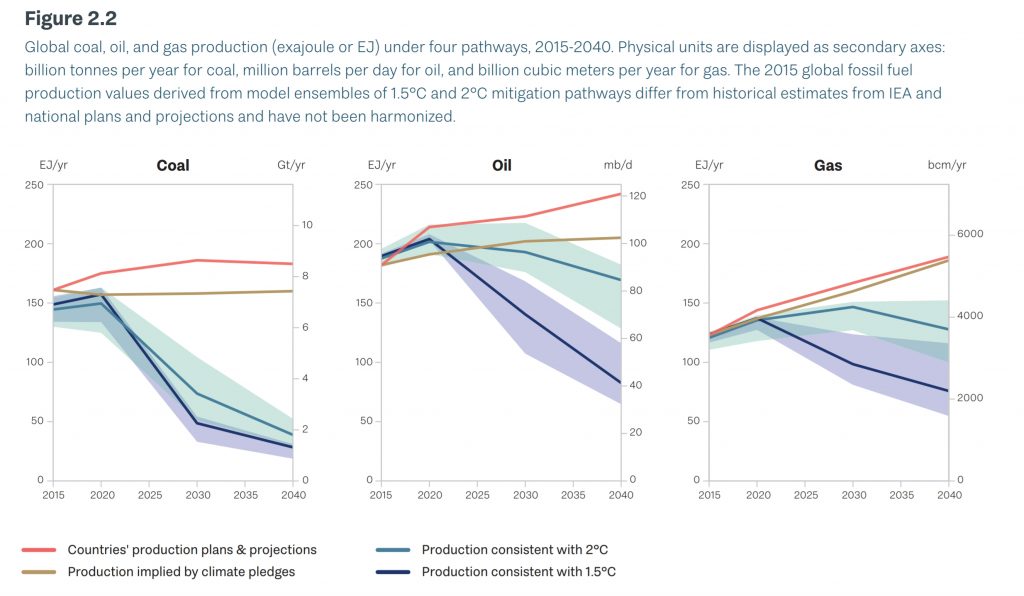Morrison thinks gas is the new coal, and it’s just as big a climate threat (RenewEconomy Sep 18, 2020)
Sep 21, 2020Australia’s government thinks that gas is the new coal, and intends to delay decarbonisation for another decade or more by investing taxpayer funding deeply into another fossil fuel.
It has been an unusually dense week of climate and energy policy announcements in Australia. Some, such as help for new interconnectors that ease the integration of wind and solar, make sense. Some, such as reducing funding for government research agencies and changing their mandate to include support for fossil fuels are the realisation of long-held efforts to erode government support for zero emissions technologies. Others, such as a ‘hydrogen hub‘, could go well, if fuelled by renewables, and terribly, if fuelled by fossils.
The most spectacular and widely covered announcement has been the government’s new policies to support fossil gas. New gas fields, pipelines, ‘gas hubs’, research collaborations with industry, potential new gas-fired power stations and a range of other measures are a constellation of policies that send a single message: Australia’s government sees gas as a fuel of the future. It wants more gas on the grid, it wants more gas dug from the ground, it wants more gas in homes, more gas in industry, more gas on ships and trucks.
As I wrote on RenewEconomy, this rams home a single, significant message: Australia’s government thinks that gas is the new coal, and intends to delay decarbonisation for another decade or more by investing taxpayer funding deeply into another fossil fuel. I don’t think that it has truly sunk in exactly how significant this is. This isn’t just half-effective emissions reduction. This isn’t scratching around the edges of the problem.
This is a full-throated, Tony-Abbott-Coal-Is-Good-For-Humanity style carbon nationalism extravaganza. This is because gas really is the new coal. Not just in the fact that it is the engine of emissions growth around the world, but in that our fate depends on how quickly and deeply we remove it from our society.
Australia’s – and the world’s – emissions are rising thanks to gas
Australia is already verifiably on track to miss its (insufficient) 2030 Paris targets. One of the key reasons for this is that the incredible growth of renewables has been offset by the incredible growth of the extraction of gas, itself an act that has an incredible carbon footprint. The raw potential of increasing the extraction and sale of gas is eye-watering: “Australia’s pipeline of gas projects could use up as much as 28 per cent of the global carbon budget needed to keep global warming below 1.5 degrees”.
The country emits a lot in the process of digging up stuff that will emit a lot more later. “In the 2018 financial year, around one in seven tonnes of greenhouse gas emitted from Australia was released in the process of making even more greenhouse gas, from both gas and coal extraction”, wrote the Climate Council’s Tim Baxter.
Australia’s centrality in extracting gas means it is a key player in the consequences of burning gas after it’s sent overseas. That is something we know, with total confidence, has become the red hot engine of world’s emissions growth, as elaborated in the 2019 Global Carbon Project’s Carbon Budget report:
It makes sense that the world’s emissions are rising alongside the rising role of gas. Gas is a fossil fuel. When you dig it up, it releases emissions. When you burn it, it releases emissions. When you process, store and transport it, it releases emissions. Increasing its presence increases climate change. It doesn’t matter – at all – that when burned it produces lower emissions than coal. The atmosphere doesn’t care what we might have burned – it cares which molecules we send up into the sky.
This solid scientific fact is what Australia’s government ministers like Angus Taylor are trying to obscure, when they falsely claim that gas reduces emissions. Old school climate change denial is over. Today, the main threat to climate action comes from people who say they’re trying to help, when really, they’re enriching themselves by harming us.
Less gas = a safer planet
The converse of the climate threat of gas is that better climate outcomes rely on less gas being burned. This is something I have seen cropping up in nearly every single climate report, many of which seem to be coming out over the past few weeks. They each seem to show something simple: the best future scenarios for climate involve less gas, and the worst involve the most gas.
Let’s start with the 2019 UN Environment Program (UNEP) Production Gap report (an update for 2020 is due out soon). This looks as the extraction of gas, and shows that the best climate outcomes happen when we stop digging it up:
BP’s recent Energy Outlook paints a similar picture for gas:
The International Energy Agency’s various forward-looking scenarios in their technology-focused update paints another very familiar picture for gas: the better the climate outcomes (the ‘SDS’, or ‘sustainable development scenario’), the less gas:
It feels like there’s a new global climate report coming out every week, and it’s a little exhausting. But stepping back from them, and watching Australia’s gas-fired recovery take form, it is very clear what is happening. The Energy Minister Angus Taylor and the Prime Minister Scott Morrison – along with the entire gas extraction, transport and burning industry – recognise that gas is the new coal, and the successful fight against coal of the 2010s could be repeated for gas.
That inspires efforts to take full advantage of a pandemic that’s killed hundreds of thousands of people to lock in government support for gas, to protect it from an incoming rising backlash both from governments around the world and the public. it’s going to be the fight of the decade.
This article was published by Renew Economy.







